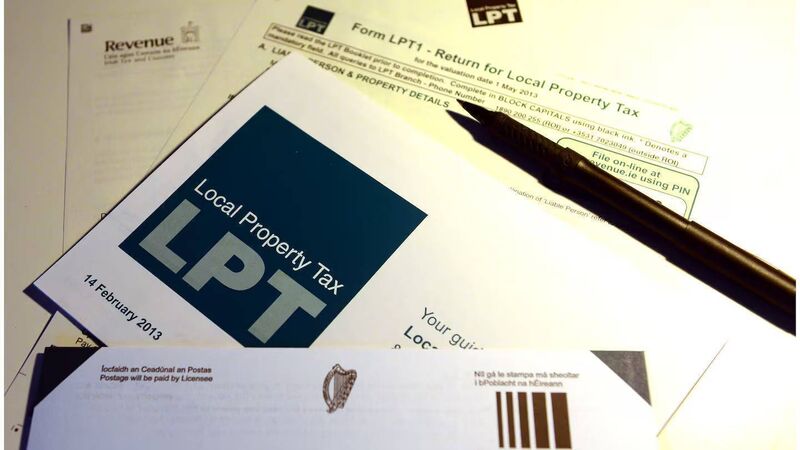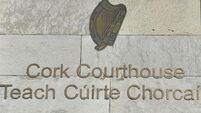Local property tax explained: how to self-assess the value of your Irish properties and avoid Revenue penalties

What happens if we get the value wrong? Will Revenue come after us?
Dear Ruth,
It’s completely understandable that you’re feeling a little concerned after receiving your LPT letter, particularly since you own two properties. Many homeowners find self-assessing the value of their properties confusing, especially when one property has few directly comparable sales nearby. Let’s go through the steps involved.
First, let’s clarify what “self-assessment” actually means. Essentially, Revenue expects you to provide an accurate estimate of each property’s market value on the official valuation date, which for the current LPT cycle is November 1, 2025. You are required to assess what your property would reasonably have sold for on that day. Following this, the deadline for filing your LPT return is November 7. Meeting this deadline is essential to avoid penalties and interest charges. The valuation you submit will determine your LPT liability for the period 2026 to 2030.
Unlike other taxes where Revenue sets the amount, self-assessment places the responsibility on you to make a reasonable, evidence-based estimate. While it may feel intimidating, the goal is straightforward: declare a realistic market value for each property. Revenue does not expect perfection, but valuations should be justifiable. If a declared value is significantly incorrect — too low or too high — Revenue may request clarification or adjustment, and in some cases penalties could apply.
Several online tools are available to help you determine a reasonable value for your properties. The Property Price Register provides the actual sale prices of residential properties in Ireland since 2010, including addresses and dates of sale. Daft.ie and MyHome.ie list current properties for sale, giving an indication of asking prices in your area.
Revenue’s online LPT valuation tool allows you to enter your property address, Eircode, or area to see the relevant valuation band and average property values nearby. Additionally, the CSO Residential Property Price Index lets you track average property prices in your area; by entering your Eircode, you can see trends and price movements over time.
I’d recommend starting with the Property Price Register to identify recent sales of properties similar to yours. Aim to select at least three comparable properties — same size, number of bedrooms, general condition, and similar location. This “like-for-like” comparison is essential.
Next, check current asking prices on Daft.ie and MyHome.ie. While asking prices are not final sale prices, they show what buyers are currently willing to pay, helping you understand current market sentiment.
For rural or unique properties, where direct comparables may be scarce, Revenue’s LPT tool and the CSO price index provide additional guidance on average values and valuation bands in your area.
Finally, consider your property’s Building Energy Rating (BER). Homes with a good BER generally achieve higher prices than less energy-efficient homes, so take this into account when setting your LPT value.
Using these tools together — actual sales, asking prices, average trends, and energy performance — allows you to establish a reasonable, defensible valuation. Keep a record of the data you consult, including websites and comparable properties, to support your assessment if Revenue ever queries it.
Your town property is generally easier to value. Focus on three or more recent sales of similar homes in your estate or nearby areas. Consider:
Size and layout: Number of bedrooms, bathrooms, and overall floor area;
Condition: Renovations, maintenance issues, or upgrades;
Location within the estate: Quiet cul-de-sac versus busy road, nearby amenities, and schools
BER: A good BER may justify a slightly higher valuation Adjust your estimate based on differences. For example, a recently renovated kitchen or larger garden may push the valuation to the higher end of comparable sales, while properties requiring repairs might sit lower.
Rural properties can be more challenging due to their unique nature and limited nearby comparables. Here’s a practical approach:
Look at a wider area: Identify similar houses in your county, focusing on size, number of bedrooms, and general layout;
Factor in property features: Consider the size, layout, condition, recent renovations, and unique internal elements such as fitted kitchens, bathrooms, or extensions, all of which can influence value;
Adjust for differences: Compare your property’s condition, BER, and unique characteristics to the examples you find.
Even if no exact match exists, this approach helps establish a reasonable market value. Keep notes of your research, including comparable sales, asking prices, and BER considerations, in case Revenue requests evidence.
You can complete the self-assessment yourself, especially for standard town properties. However, consulting an estate agent — particularly for rural or unique homes — can be very helpful. Agents have local market knowledge and can provide insight into current prices and trends. Even a short consultation or informal opinion can give confidence that your self-assessment is realistic and reduces the risk of mistakes.
The most common mistakes people make are using outdated listings or asking prices and not factoring in the property’s condition or BER. Revenue expects valuations to be “reasonable and supportable,” so ensure you file away your supporting evidence whether this is in hard or soft copy.
If Revenue finds your declared value significantly lower than the market value — for example, if you later sell the property for substantially more than the declared band — your self-assessment may trigger an investigation. Revenue actively monitors sales exceeding the declared LPT band by more than 15% and may request evidence for your valuation.
If undervaluation is detected, you will need to pay additional LPT owed for previous years, plus interest (typically 8% per annum). Revenue can also recover unpaid LPT directly from your salary, pension, or tax refunds and may withhold tax clearance certificates, which could affect grant applications, mortgage approvals, or the sale of your property.
Once you’ve determined
reasonable values for both properties, submitting your LPT
online is straightforward.
Revenue’s portal guides you, but always double-check property addresses, declared values, and ensure all information is accurate to avoid simple errors.
Key takeaways
1. Self-assessment means you set the value based on evidence;
2. Use multiple tools: Property Price Register, Daft.ie, MyHome.ie, Revenue’s LPT valuation tool, and the CSO Residential Property Price Index;
3. Compare at least three properties like-for-like and adjust for condition, internal features, and BER;
4. Consult an estate agent for complex or unique properties — even a brief discussion is valuable;
5. Document your process to support your valuation if Revenue queries it;
6. Submit carefully through Revenue’s online portal, double-checking all details;
7. Avoid undervaluation to prevent penalties, interest, or administrative complications;
8. Remember key dates: November 1 is the official valuation date; November 7 is the LPT filing deadline.
By taking your time, documenting your process, and using the tools and guidance available, you can confidently complete your LPT self-assessment, meet Revenue’s requirements, and avoid unnecessary stress or penalties.
Majella Galvin is Chair of the Membership and Public Affairs Committee of the Society of Chartered Surveyors Ireland. A chartered surveyor, estate agent and registered valuer at DNG Galvin Auctioneers Bandon, she has been working in the property sector for over a decade - www.dnggalvin.ie If you have a property-related query or issue you would like to raise with Majella, please email irishexaminerpropertyqueries@scsi.ie










